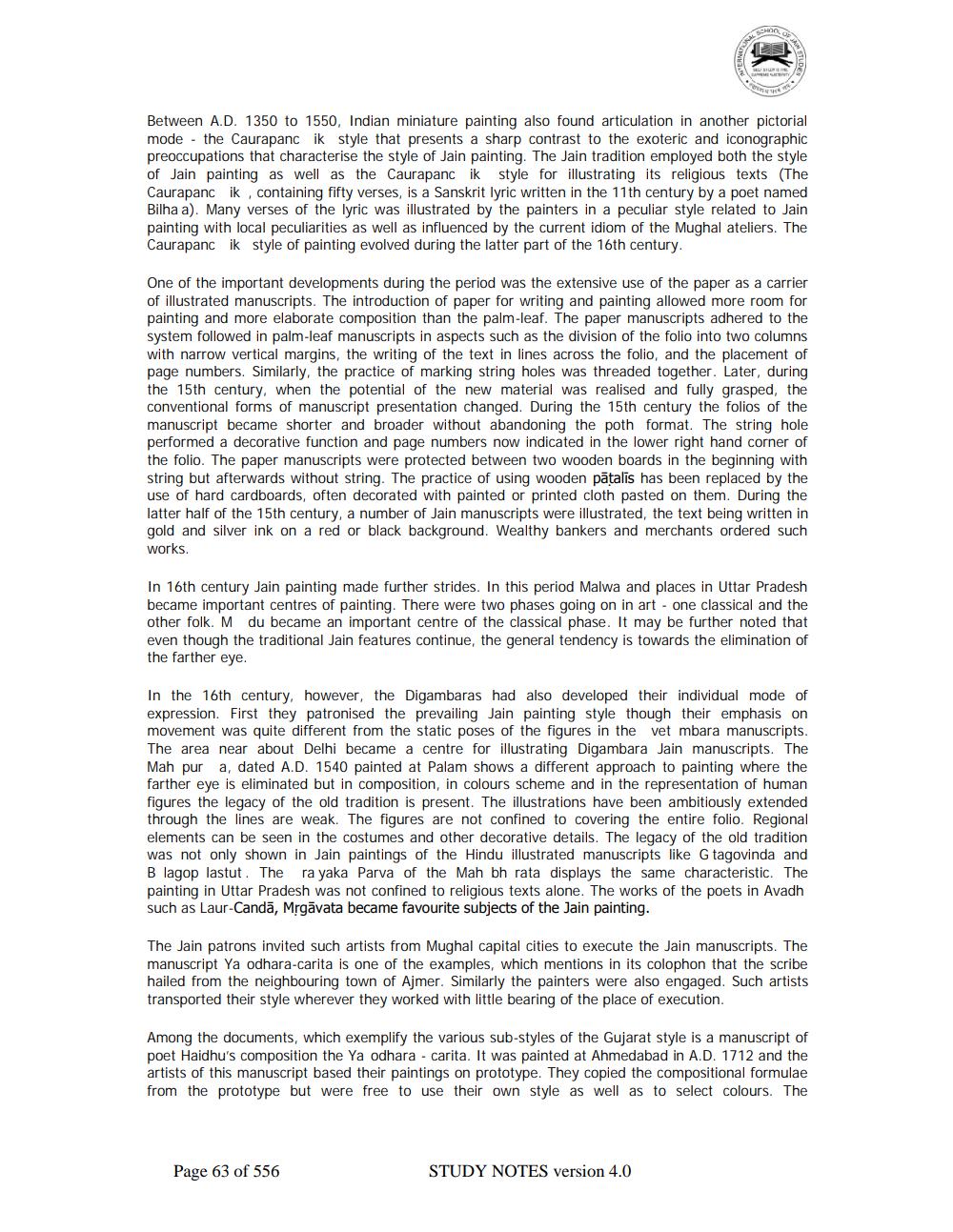________________
Between A.D. 1350 to 1550, Indian miniature painting also found articulation in another pictorial mode - the Caurapancik style that presents a sharp contrast to the exoteric and iconographic preoccupations that characterise the style of Jain painting. The Jain tradition employed both the style of Jain painting as well as the Caurapancik style for illustrating its religious texts (The Caurapancik, containing fifty verses, is a Sanskrit lyric written in the 11th century by a poet named Bilha a). Many verses of the lyric was illustrated by the painters in a peculiar style related to Jain painting with local peculiarities as well as influenced by the current idiom of the Mughal ateliers. The Caurapancik style of painting evolved during the latter part of the 16th century.
One of the important developments during the period was the extensive use of the paper as a carrier of illustrated manuscripts. The introduction of paper for writing and painting allowed more room for painting and more elaborate composition than the palm-leaf. The paper manuscripts adhered to the system followed in palm-leaf manuscripts in aspects such as the division of the folio into two columns with narrow vertical margins, the writing of the text in lines across the folio, and the placement of page numbers. Similarly, the practice of marking string holes was threaded together. Later, during the 15th century, when the potential of the new material was realised and fully grasped, the conventional forms of manuscript presentation changed. During the 15th century the folios of the manuscript became shorter and broader without abandoning the poth format. The string hole performed a decorative function and page numbers now indicated in the lower right hand corner of the folio. The paper manuscripts were protected between two wooden boards in the beginning with string but afterwards without string. The practice of using wooden pātalis has been replaced by the use of hard cardboards, often decorated with painted or printed cloth pasted on them. During the latter half of the 15th century, a number of Jain manuscripts were illustrated, the text being written in gold and silver ink on a red or black background. Wealthy bankers and merchants ordered such works.
In 16th century Jain painting made further strides. In this period Malwa and places in Uttar Pradesh became important centres of painting. There were two phases going on in art - one classical and the other folk. M du became an important centre of the classical phase. It may be further noted that even though the traditional Jain features continue, the general tendency is towards the elimination of the farther eye.
In the 16th century, however, the Digambaras had also developed their individual mode of expression. First they patronised the prevailing Jain painting style though their emphasis on movement was quite different from the static poses of the figures in the vet mbara manuscripts. The area near about Delhi became a centre for illustrating Digambara Jain manuscripts. The Mah pura, dated A.D. 1540 painted at Palam shows a different approach to painting where the farther eye is eliminated but in composition, in colours scheme and in the representation of human figures the legacy of the old tradition is present. The illustrations have been ambitiously extended through the lines are weak. The figures are not confined to covering the entire folio. Regional elements can be seen in the costumes and other decorative details. The legacy of the old tradition was not only shown in Jain paintings of the Hindu illustrated manuscripts like G tagovinda and Blagop lastut. The ra yaka Parva of the Mah bh rata displays the same characteristic. The painting in Uttar Pradesh was not confined to religious texts alone. The works of the poets in Avadh such as Laur-Candā, Mrgāvata became favourite subjects of the Jain painting.
The Jain patrons invited such artists from Mughal capital cities to execute the Jain manuscripts. The manuscript Ya odhara-carita is one of the examples, which mentions in its colophon that the scribe hailed from the neighbouring town of Ajmer. Similarly the painters were also engaged. Such artists transported their style wherever they worked with little bearing of the place of execution.
Among the documents, which exemplify the various sub-styles of the Gujarat style is a manuscript of poet Haidhu's composition the Ya odhara - carita. It was painted at Ahmedabad in A.D. 1712 and the artists of this manuscript based their paintings on prototype. They copied the compositional formulae from the prototype but were free to use their own style as well as to select colours. The
Page 63 of 556
STUDY NOTES version 4.0




